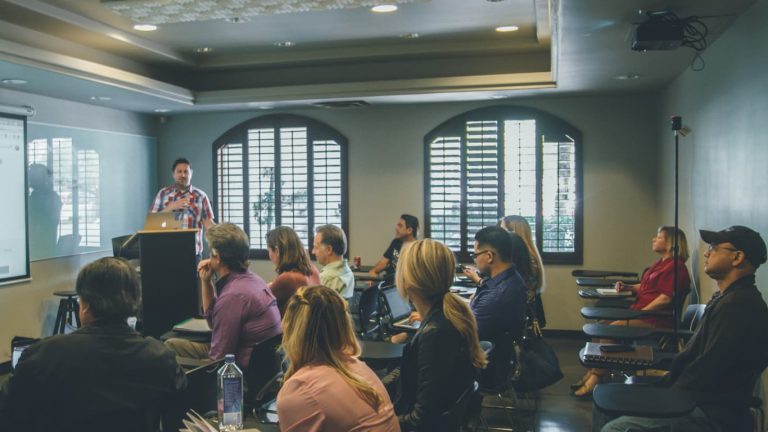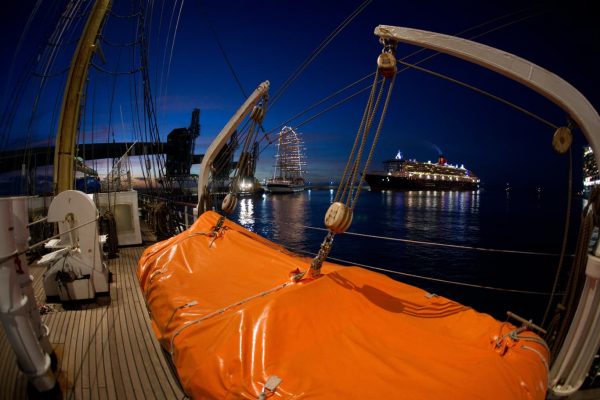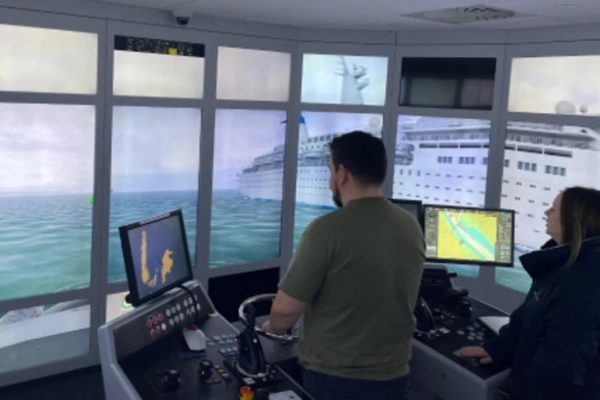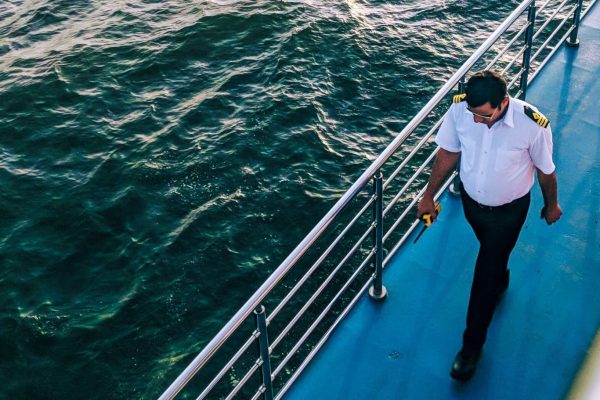The Marlins English Test (MET), also known as Standard Maritime Communication Phrases (SMCP), is an English language proficiency test specifically designed for the maritime industry. The test measures the ability of seafarers to understand and use English in a maritime context. It covers various aspects of maritime communication, including navigation, cargo operations, and emergency situations. The test is offered in different levels, from basic to advanced, to cater to the needs of seafarers at different levels of experience and expertise. It is used by shipping companies, maritime training institutions, and flag states as a means of assessing the English language skills of seafarers.
The test assesses the language skills of seafarers in a maritime context, including their ability to understand and use specialized maritime terminology and procedures, as well as their ability to communicate effectively with other members of the crew and with external agencies.
Ship-to-Ship, Ship-to-Shore, and Internal Communications
For the Marlins English Test, you’ll need to have a good understanding of standard maritime terminology and procedures, as well as the ability to understand and use English in a maritime context. The test will also evaluate your ability to understand and use specialised maritime terminology and procedures, as well as your ability to communicate effectively with other members of the crew (Internal Communications), shoreside (Ship-to-shore Communications), and with other vessels (Ship-to-ship Communications).
Ship-to-Ship Communications in the Marlins English Test
Ship-to-ship communication is an important aspect of the Marlins English Test as it assesses seafarers’ ability to understand and use English in relation to communication with other ships. This includes understanding and using standard maritime phrases, procedures, and protocols, as well as being able to use radio communication equipment correctly and effectively.
Ship-to-Shore Communications in the Marlins English Test
Ship-to-shore communication is another important aspect of the test, as it assesses seafarers’ ability to understand and use English in relation to communication with shore-based authorities and agencies. This includes understanding and using standard phrases, procedures, and protocols for reporting to port authorities, as well as being able to use communication equipment such as satellite phones and email effectively.
Internal Communications in the Marlins English Test
Internal communications onboard a ship is also covered in the test, as it assesses seafarers’ ability to understand and use English in relation to communication with other members of the crew. This includes understanding and using standard phrases, procedures, and protocols for communicating with the ship’s officers, as well as being able to understand and use specialized maritime terminology and procedures related to the ship’s operations.
Examples of Language You’ll Need to Be Familiar With For the Marlins English Test
This is a non-exhaustive list, but some examples of the maritime terms that you may encounter in the Marlins English Test.
- “Anchor’s aweigh” – This phrase is used to indicate that the anchor has been raised and the ship is ready to sail.
- “Ahead full” – This is a command given to the engine room to indicate that the ship’s engines should be set to full ahead (maximum speed).
- “All hands” – This phrase is used to summon all members of the crew to a specific location or to a meeting.
- “Aye, aye” – This is a common expression used by crew members to indicate that they understand and will comply with an order.
- “Berth” – A specific location where a ship is to be moored or anchored.
- “Bilge” – The lowest part of a ship’s hull, where water and other liquids collect.
- “Bridge” – The location on a ship from which the vessel is navigated and its course is directed.
- “Dead reckoning” – A method of navigation that involves calculating the ship’s position based on its previous course and speed.
- “Draft” – The depth of a ship’s keel below the waterline.
- “Freeboard” – The distance from the waterline to the deck of a ship.
- “Heave to” – To bring a ship to a stop by putting the helm hard over and backing the sails.
- “Lines” – Ropes or cables used to secure a ship to a dock or anchor.
- “Port” – The left side of a ship when facing forward.
- “Starboard” – The right side of a ship when facing forward.
- “Tugboat” – A small, powerful boat that is used to maneuver larger vessels in and out of port.
- “Whistle” – A signal device that is used to communicate with other ships or with shore-based authorities.
Types of Terminology to Familiarise Yourself with for the Marlins English Test
Navigation in the Marlins English Test
Navigation is one of the key aspects of maritime communication covered in the Marlins English Test. The test assesses seafarers’ ability to understand and use English in relation to navigational concepts and procedures, such as chart symbols and abbreviations, compass bearings, and tides and currents. It also includes questions on navigation equipment and its proper use, such as radar and GPS.
Cargo in the Marlins English Test
Cargo operations is another important aspect of maritime communication covered in the MET. The test assesses seafarers’ ability to understand and use English in relation to cargo-handling procedures and terminology, such as stowage, lashing, and securing of cargo. It also includes questions on dangerous goods and their proper handling, as well as on the communication between cargo handlers and the ship’s crew.
Emergency Situations in the Marlins English Test
Emergency situations are an important aspect of maritime communication that is also covered in the Marlins English Test. The test assesses seafarers’ ability to understand and use English in relation to emergency procedures and terminology, such as fire fighting, evacuation, and abandon ship procedures. It also includes questions on communication between crew members and with external agencies during emergency situations.
Why Do Seafarers Use English?
English is considered the international language of the maritime industry, and is widely used as the common language among seafarers and between ships and shore-based personnel. This is due to historical reasons, where English-speaking countries have been the leading maritime nations for centuries.
Furthermore, English is the most widely spoken language in the world and the most widely used language in international trade, making it the most convenient language for seafarers to use when communicating with people from other countries. It is also used as the official language in many international conventions and regulations of the maritime industry, such as the International Convention for the Safety of Life at Sea (SOLAS) and the International Regulations for Preventing Collisions at Sea (COLREGS).
Therefore, the Marlins English Test is an important tool for ensuring that seafarers have the necessary language skills to communicate effectively and safely in the maritime industry, which is critical for the safety of ships, crew and passengers, as well as for the protection of the marine environment.
How to Get Maritime English Certification
There are several steps you can take to obtain maritime English certification:
- Study the material: Familiarize yourself with the format and content of the test, as well as the specific maritime terms and procedures that will be covered. You can find study materials, such as textbooks and practice tests, from various sources such as maritime schools, training centres or online resources.
- Take a preparatory course: Many maritime schools, training centres, and online providers offer preparatory courses for the Marlins English Test. These courses can help you to improve your understanding of maritime English and to practice the specific skills that will be tested.
- Take the test: Once you feel prepared, you can take the Marlins English Test. The test is administered by authorised testing centres, and you will need to register and pay a fee to take the test.
- Receive your certification: Upon passing the test, you will receive a certificate of proficiency in maritime English. The certificate is valid for five years and can be used as a proof of your proficiency in maritime English when applying for a job or a seafarer’s document.
Note that the Marlins English Test is not the only Maritime English certification available, other organisations like the International Maritime Organization (IMO) also provide courses and certifications in Maritime English, but the Marlins English Test is widely accepted and recognised by maritime employers worldwide.
It is also worth mentioning that obtaining a certification in Maritime English is not just about passing a test, but it’s also about being able to communicate effectively in the maritime industry, which is critical for the safety of ships, crew and passengers, as well as for the protection of the marine environment.



